MEMBER COUNTRY- SOUTH KOREA
SOUTH KOREAN CULTURE
South Koreans shares a long history of cultural exchange with their neighbors, especially ancient China and modern Japan. Join us as we explore the rich cultural history of South Korea.
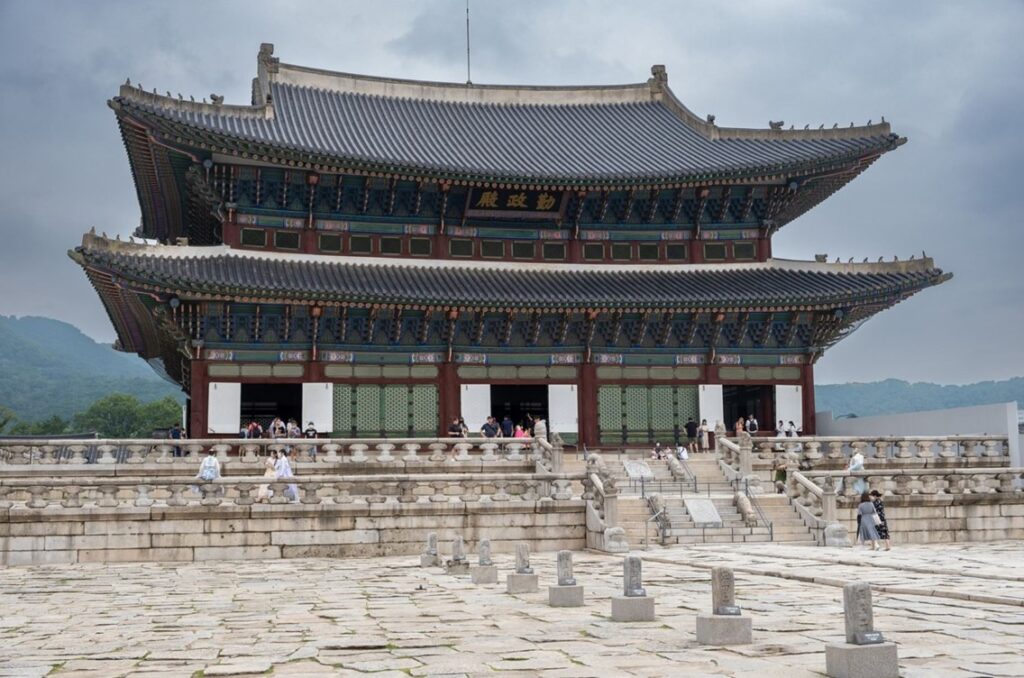
Built in 1395, Gyeongbokgung Palace was the first and largest of the royal palaces built during the Joseon Dynasty.
Located at the heart of the newly appointed capital of Seoul (formerly known as Hanyang) and the largest of the Five Grand Palaces ( Gyeonghuigung, Deoksugung, Changgyeonggung, Changdeokgung), Gyeongbokgung Palace represents the sovereignty of the Joseon Dynasty.
To this day, the Korean government continues to invest time and effort into rebuilding, restoring, and maintaining the palace for future generations.
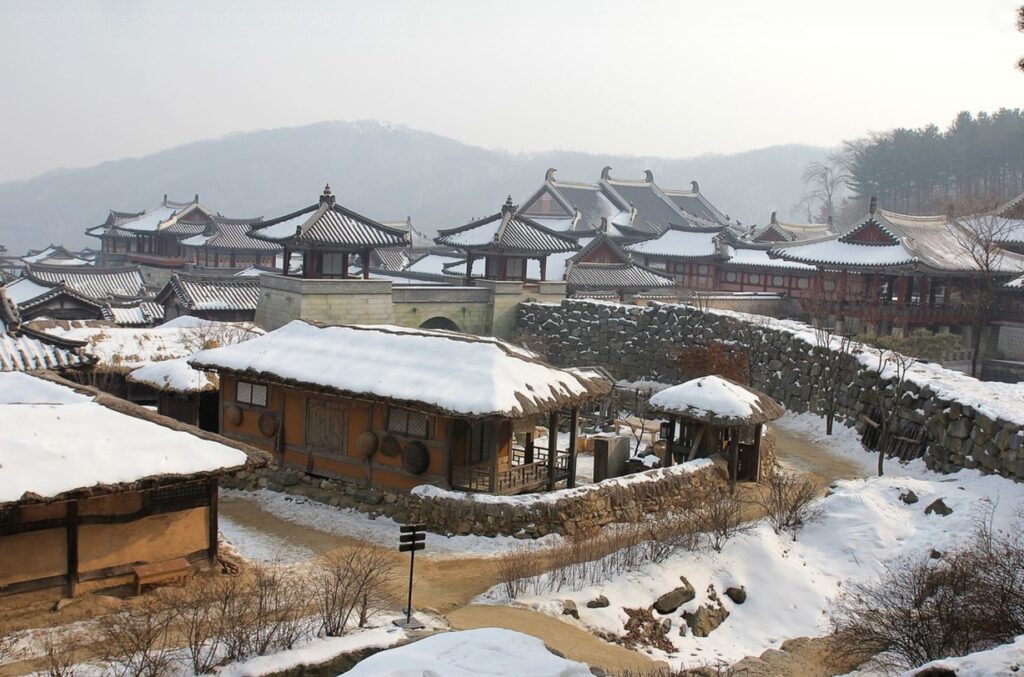
Before the advent of electricity and modern architecture, many Koreans lived in small villages around the countryside. On the left, a typical village is pictured in winter.
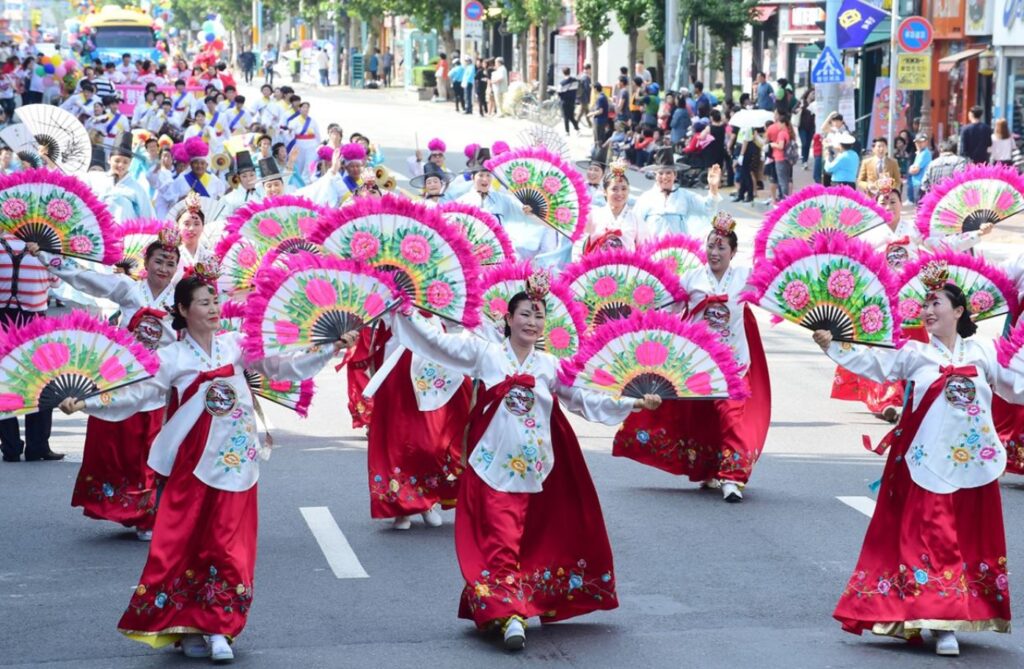
Today, the people of Korea still celebrate their cultural heritage with a dance in traditional dress. Notice the bright red colors and the large, intricately detailed fans. The color red is considered lucky in Asia culture while the size and historically, the design of the fan would reflect one’s own prosperity and upbringing.
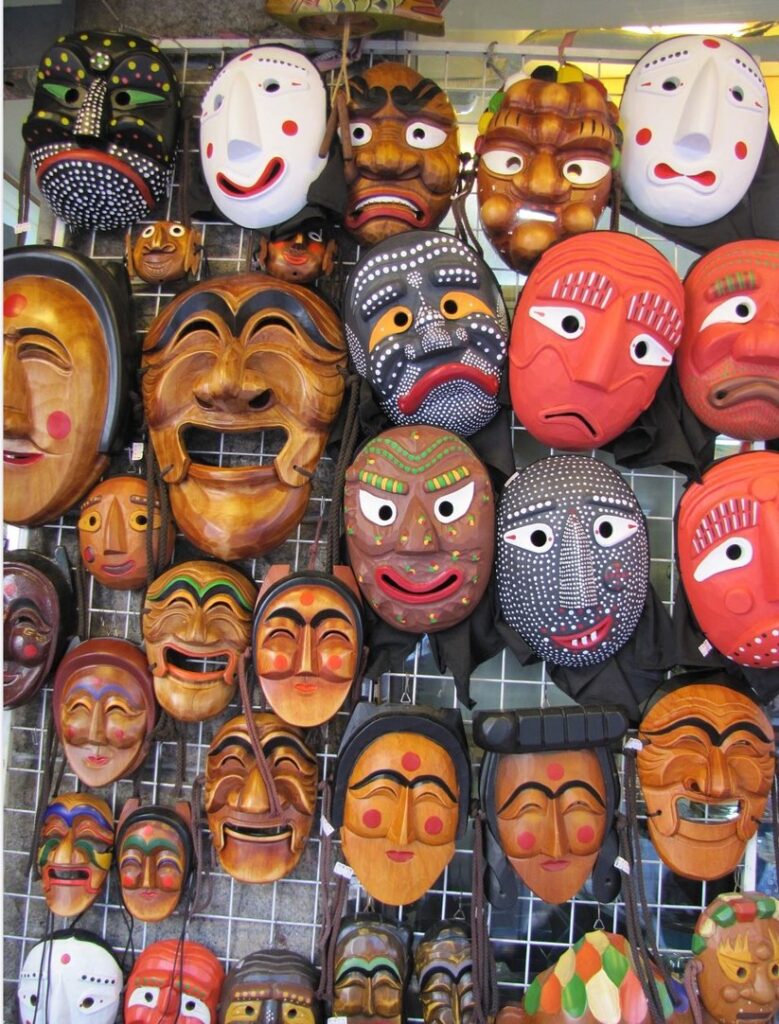
Traditional masks were worn to ward off evil spirits.
The design of each mask was made to deter specific spirits.
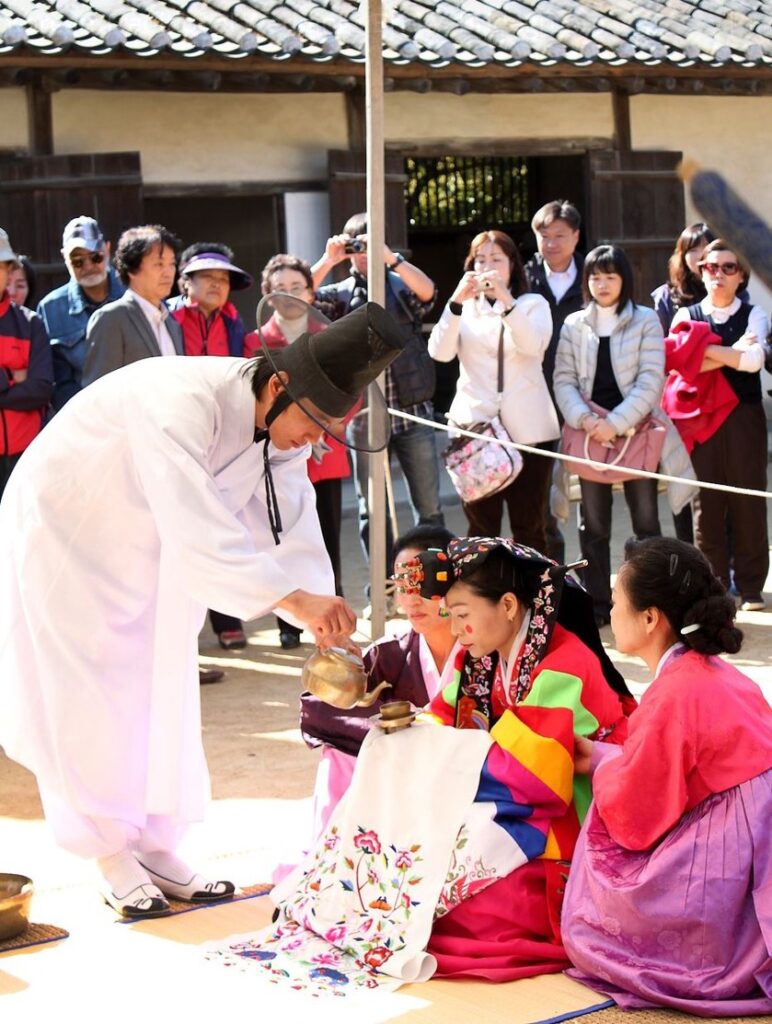
Wedding ceremonies started with the traditional tea ceremonies and eating light snacks, such as dates and chestnuts. Well wishes and words of wisdom are spoken after the tea ceremony.
The groom and bride would serve tea to their parent-in-law. This act signified service to the family and reflected a good upbringing.
This part of the wedding is considered especially sacred because the focus of Eastern culture is to honors both families coming together, rather than just the bride and groom individually. At the conclusion of this ceremony, the families are considered to be eternally intertwined.
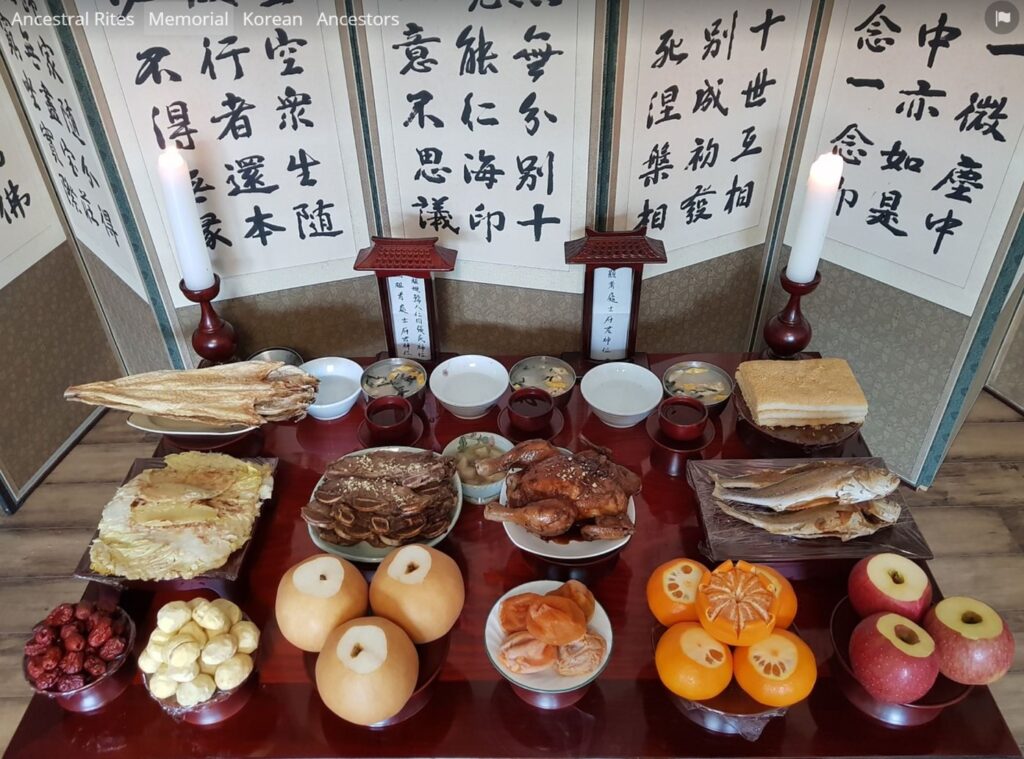
During anniversaries of significant familial events and the new year, families would set out food as offerings to their ancestors. Typical offerings included tea, fruits, and meat. Several large candles may be lit to represent the time and passage of messages to the other side.
